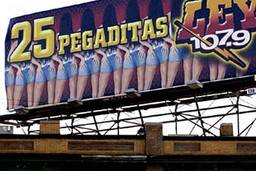In the spirit of immersing ourselves in the current state of labor before the AFL-CIO Quadrennial kicks off next week here are two divergent articles on the current state of labor:
In the Sunday Business Section of the Times had this mortifying look at labor standards, How Costco Became the Anti-Walmart: But not everyone is happy with Costco's business strategy. Some Wall Street analysts assert that Mr. Sinegal is overly generous not only to Costco's customers but to its workers as well.
Costco's average pay, for example, is $17 an hour, 42 percent higher than its fiercest rival, Sam's Club. And Costco's health plan makes those at many other retailers look Scroogish. […] Emme Kozloff, an analyst at Sanford C. Bernstein & Company, faulted Mr. Sinegal as being too generous to employees, noting that when analysts complained that Costco's workers were paying just 4 percent toward their health costs, he raised that percentage only to 8 percent, when the retail average is 25 percent.
"He has been too benevolent," she said. "He's right that a happy employee is a productive long-term employee, but he could force employees to pick up a little more of the burden."
And the rest of the article is about profit margins. Because while its labor practices make Costco look like an odd duck, what really matters is its ability to drive a hard bargin. Cheery reading.
Getting away from the absurdist coverage of the Times (I love when labor is only covered in the "Business" section) is Barbara Ehrenreich's"Tiny Labor" in the August issue of The Progressive:
… today’s Tiny Labor has to take on class-wide issues now—or risk being the “special interest group” the right always claims it is. The unions should be spearheading the drive for universal health care, subsidized housing, and child care, adequate unemployment insurance, and all the other public benefits that would make low-wage workers’ lives more sustainable. At the local level, this might mean sending organizers into low-income neighborhoods to help people deal with TANF (the replacement for welfare) or the public housing authorities—just as, for example, the Swedish unions do.
And this only the beginning of a concise, interesting foray into where labor should head next.
Phoebe Connelly, a former managing editor at In These Times, is Web Editor at The American Prospect.



